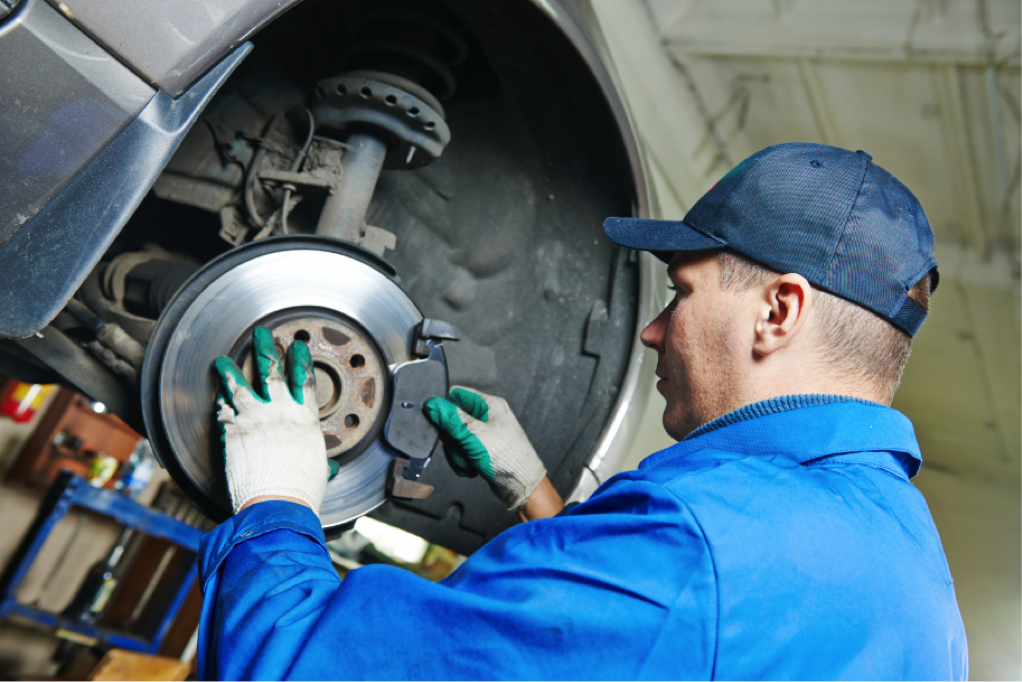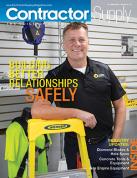Fleet Maintenance: The benefits of a complete brake job
Careful attention to complete brake system ensures top performance and safety.
By Joe Finze, MAT Holdings, Inc.
The ideal goal of any brake job, both from the customer’s and the technician’s perspective, should be to restore the vehicle’s brake system and braking performance to the same safe condition as when it left the factory. Anything less is an incomplete and unsafe brake job. Of course, what constitutes this complete brake job will vary widely depending on the vehicle and the state of the braking system, and requires judgement calls by the technician as to what is required. This judgement call, however, should ideally be made based upon a thorough inspection and repair process, so as to ensure the highest quality performance and customer satisfaction.
 The following describes not just the process of doing a complete brake job, but also the rationale for doing so and benefits that can help automotive shops to explain to customers why this complete brake job is so important. In doing so, shop technicians can be sure to keep customers happy and returning for future work.
The following describes not just the process of doing a complete brake job, but also the rationale for doing so and benefits that can help automotive shops to explain to customers why this complete brake job is so important. In doing so, shop technicians can be sure to keep customers happy and returning for future work.
The process of a complete brake job
The first step in a complete brake job is to have a brief conversation with customers about what their expectations are, in terms of how they use their vehicle, what kind of budget they have, and whether they want to use the same friction materials as in previous brake systems.
In addition to this conversation, performing a thorough inspection of every aspect of the vehicle’s brake system – brake pads, shoes, rotors, calipers, hardware, hoses, lines, and master cylinder – is absolutely critical. While front brakes typically wear out first, every aspect of the complete system should be inspected to determine what components must be serviced. Sometimes it is only necessary to clean and lubricate rear brakes.
If a technician notices that the vehicle’s front brake pads or rotors are worn, it is probably best to replace the rotors, brake pads, and hardware all at once. Hardware should be replaced each time that rotors and friction materials are, since the hardware is composed of spring steel and loses its elasticity over time. When that happens, the hardware isn’t able to keep the rotors and pads separated, as is necessary, leading to premature wear on new brake components.
 Rotors and brake pads are grouped together in this description of replacing components intentionally because when replacing brake pads, it is recommended to install new rotors or machine used rotors to proper specifications. Used brake rotors have a friction film that has transferred from the brake pad to the braking surface of the rotor. Failing to remove the old friction film potentially lengthens stopping distance and leads to poor performance from the brake system.
Rotors and brake pads are grouped together in this description of replacing components intentionally because when replacing brake pads, it is recommended to install new rotors or machine used rotors to proper specifications. Used brake rotors have a friction film that has transferred from the brake pad to the braking surface of the rotor. Failing to remove the old friction film potentially lengthens stopping distance and leads to poor performance from the brake system.
To remove the old friction film, the rotors need to be machined to specification and have a non-directional finish applied to their surfaces with sandpaper, or the rotors need to be replaced.
In addition to replacing brake pads, rotors, and hardware, it is important to clean every part of the brake system well. In particular, technicians should remove rust from steering knuckle and mounting bracket, if it is present, all the way down to bare iron. Thin layers of rust that form in these areas lead to uneven wearing and sticking of brake pads, and ultimately a longer stopping distance.
Rust removal is extremely important, especially considering that rust forms in brake systems, and causes dramatic reductions in braking efficiency. After cleaning, technicians should also lubricate any metal-to-metal contact points to enable the proper amount of motion movement in the brake system.
Other important steps in the inspection and repair process for front brakes include checking the brake calipers, opening the bleeder valve when compressing the brake caliper/piston to bleed any contaminated brake fluid, adding fluid to the master cylinder, and testing brake fluid to ensure that it is not contaminated and doesn’t need to be flushed out of the system to remove undesirable moisture and other contaminates.
All of these same steps should be followed by technicians if a vehicle has rear disc brakes. If the vehicle has rear drums and shoes, it is necessary to take the rear brake system apart to inspect the components. Technicians should be checking that there is no uneven wear to the brake shoes and that they are still integral, with the bonding to the back plate intact, lining thickness sufficient, and no cracks or uneven wear.
Given that brake shoes have many spring components, it is important to replace these springs when performing a brake job, since over time the springs can lose their tension and will not hold the shoes as tightly and the system loses efficiency.
A critical step, if replacing brake shoes, is to replace the wheel cylinder as well. Wheel cylinders and brake shoes undergo the same amount of wear, and though the wheel cylinder may outlive the brake shoes in some cases, replacing them when replacing shoes may prevent a future comeback due to the old wheel cylinders leaking fluid on the new brakes shoes.
The final key step in the complete brake job process is to perform a road test and carefully break in the new brakes: perform 30 stops from 30 miles per hour, with 30 seconds between each stop to cool. Though this process will take about 15 minutes, this important procedure allows the new brake pads and rotors to mate up and create the friction film transfer to the rotor as discussed above, as well as controlling noise.
If technicians do not have time to perform the break in process, it should be strongly recommend to the customer. This key step helps to avoid customers coming back to complain about noise, pedal feel, or long braking distance with their new brakes, and helps extend the life of the brake pads.
The benefits of completing this process
 As indicated above, one of the greatest benefits to a shop of performing complete brake jobs is ensuring customer satisfaction. By taking the time to do the process right the first time, technicians can secure customers’ loyalty and ensure that they will return for future work. Additionally, shops save time overall by avoiding comebacks.
As indicated above, one of the greatest benefits to a shop of performing complete brake jobs is ensuring customer satisfaction. By taking the time to do the process right the first time, technicians can secure customers’ loyalty and ensure that they will return for future work. Additionally, shops save time overall by avoiding comebacks.
Technicians dealing with customers who are unsure that a complete brake job is in their best interest should convey that failing to take care of all of the components at once could mean that the vehicle will be back in the shop for additional brake issues.
In the long run, customers can expect smoother braking, quieter operation, and greater longevity, with a lot less time spent in the shop, if a complete brake job is performed from the beginning. In restoring the brakes to like-new condition, technicians ensure that everything works correctly and continues to do so for a long time.
Even more important than saving costs, however, is ensuring customer safety. Partial brake jobs lead to major safety concerns. If stopping distance is extended due to an improper film on the rotors, high moisture content in the brake fluid, or some other reason, customers are less likely to be able to stop their vehicle in time in an emergency situation.
When not replacing the used rotors, it is very important to machine the used rotors to the manufactures recommended specifications and install them back into the brake system with new brake pads.
Rotors that are not within recommended specifications will likely have less material and will not be able to handle high temperatures created by the brake system. When a rotor becomes heat-soaked, stopping distance can be extended, brake fade may occur, and in extreme cases the vehicle may not be able to stop at all. It is imperative to follow the vehicle manufactures specifications to avoid any braking issues.
A complete brake job, as described in this article, is designed to restore the vehicle’s brake system and braking performance back to the same as it was when the vehicle left the factory. In understanding this process as well as the reason for doing so from both the shop’s and vehicle owner’s perspectives, technicians can explain to customers why a complete brake job is necessary, and can ensure customer loyalty.
Joe Finze is the Midwest sales executive at MAT Holdings, Inc. MAT Holdings started in the American Midwest, and from its headquarters in Long Grove, Illinois, the company has grown to become a diversified global manufacturing, marketing and distribution company operating globally across three continents and employing over 14,000 worldwide. Learn more at www.matholdingsinc.com.
















